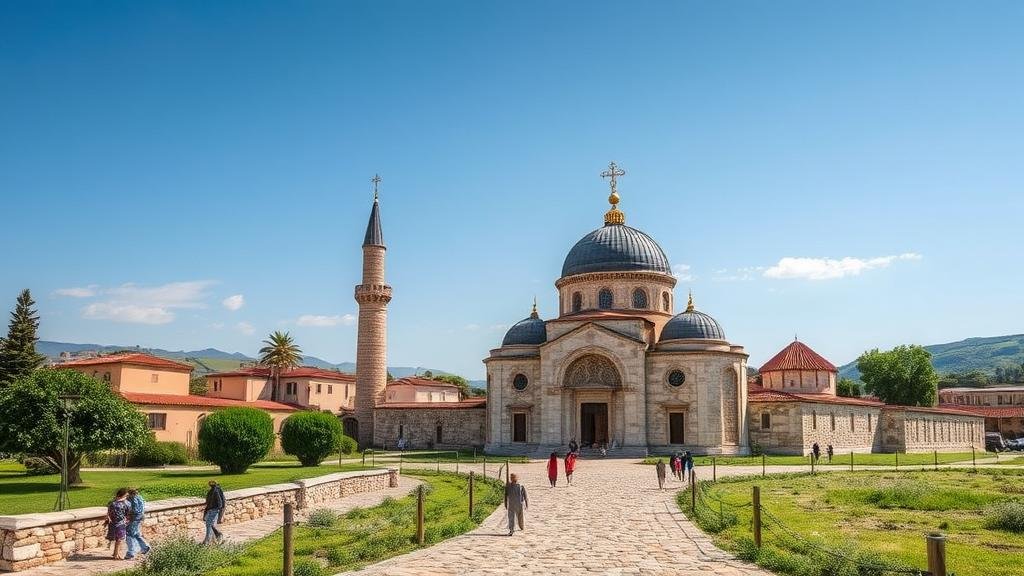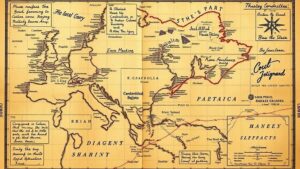Tracing Religious Pilgrimage Routes for Clues to Lost Artifacts
Tracing Religious Pilgrimage Routes for Clues to Lost Artifacts
Religious pilgrimage routes have served as not only spiritual pathways but also as conduits for cultural exchange and preservation of artifacts. This article explores the significance of tracing these routes to uncover clues about lost artifacts, drawing on historical, archaeological, and geographic evidence.
The Historical Context of Religious Pilgrimages
Religious pilgrimages date back thousands of years, with prominent examples found in various cultures. The Hajj to Mecca, the Camino de Santiago in Spain, and the Kumbh Mela in India are some of the most recognized pilgrimage routes. e paths have fundamentally shaped the landscapes through which they pass, both physically and culturally.
- The Hajj, an obligatory pilgrimage for all able Muslims, has drawn millions since its establishment in the 7th century.
- The Camino de Santiago, particularly significant since the Middle Ages, led to the supposed burial site of St. James in Santiago de Compostela, Spain.
According to the Pew Research Center, over 2.5 million people participated in the Hajj in 2019 alone, illustrating the contemporary relevance of such pilgrimage routes (Pew Research Center, 2020).
Artifacts Associated with Pilgrimages
Artifacts linked to religious pilgrimages range from physical objects such as relics and religious icons to more ephemeral cultural artifacts like oral traditions and communal practices. Many of these artifacts hold significant historical and cultural value, representing the collective beliefs and practices of diverse communities.
- Relics, such as the bones of saints, which are often housed in religious sites.
- Artistic expressions, including sculptures and paintings created in response to pilgrimage activities.
For example, the Cathedral of Santiago de Compostela is home to numerous pilgrim-related artifacts, including the famed botafumeiro, a giant incense burner used during pilgrim masses.
The Role of Technology in Tracing Pilgrimage Routes
Modern technology plays a crucial role in tracing the routes of historical pilgrimages. Geographic Information Systems (GIS) and remote sensing have become invaluable for researchers, allowing them to map ancient paths and visualize the movement of people and artifacts.
A study conducted by K. Issa et al. (2021) demonstrated how GIS was used to analyze the Camino de Santiago, revealing shifts in routes and the impact of natural terrain on pilgrimage patterns. By examining this data, researchers can identify potential locations of lost artifacts.
Case Studies of Successful Artifact Recovery
Historically, several significant discoveries of lost artifacts have occurred due to tracing pilgrimage routes. Notable case studies include:
- The recovery of the relics of St. Cuthbert, which were located after scholars mapped pilgrimage routes in Northumberland, England.
- The unearthing of ancient pottery associated with the Kumbh Mela, informed by studies of traditional pilgrimage pathways.
These examples highlight how interconnected cultural practices and historical roads can lead archaeologists and historians to important discoveries.
Challenges in Recognizing and Verifying Artifacts
Despite the successes, there are significant challenges when tracing pilgrimage routes for artifacts. degradation of routes over decades, coupled with urban development, poses a risk to potential artifacts and their contexts.
- Many pilgrimage sites are situated in areas that have experienced substantial environmental change, complicating archaeological investigations.
- Artifact authenticity can also be questioned, particularly if proper care in documentation is lacking.
Addressing these challenges requires collaboration between archaeologists, historians, and local communities to ensure preservation of artifacts and paths.
Conclusion: Enhancing Our Understanding through Pilgrimage Routes
Tracing religious pilgrimage routes provides invaluable insights not only into the spiritual journeys of individuals but also into the cultural and historical frameworks that shape our understanding of human civilization. By leveraging modern technology and interdisciplinary cooperation, researchers can continue unearthing artifacts that reveal the profound impacts of these age-old traditions.
Actionable takeaways for researchers include:
- Use modern technology like GIS for mapping pilgrimage routes and historical contexts.
- Engage with local communities for oral histories and traditional knowledge related to pilgrimage practices.
- Prioritize interdisciplinary collaboration to enhance the scope and accuracy of research.
These methods will help preserve and enhance our understanding of religious pilgrimage routes and their associated artifacts for future generations.



